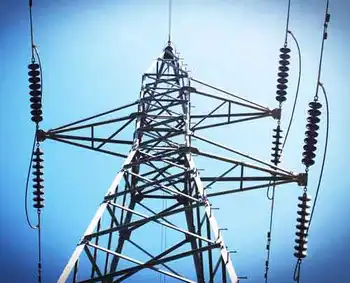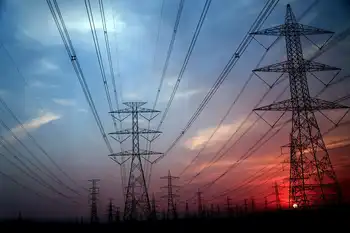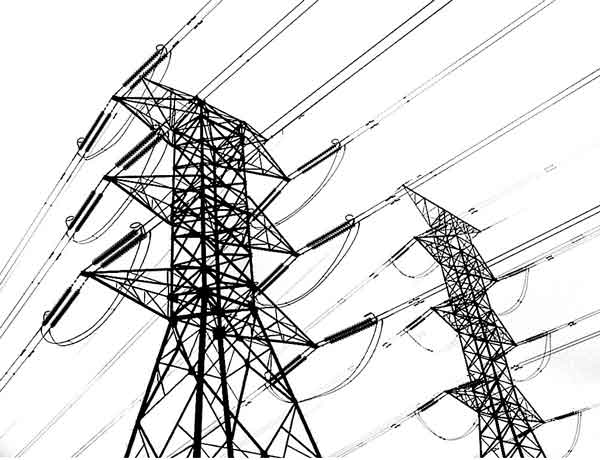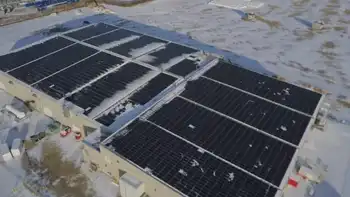PaperPhone would use less power
By ABC News
Protective Relay Training - Basic
Our customized live online or in‑person group training can be delivered to your staff at your location.

- Live Online
- 12 hours Instructor-led
- Group Training Available
A team of computer researchers believes those problems will soon be history, as your future cellphone will be as thin, light and flexible as a sheet of paper.
At an upcoming computing conference, Roel Vertegaal, associate professor of computer science and director of the Human Media Lab at Queen's University in Ontario, will officially unveil the "PaperPhone."
Developed with help from researchers at Arizona State University, the prototype of what the researchers call a "flexible iPhone" is made of super-thin, ultra-light bendable film, but makes calls, stores books and plays music.
"This is not a maybe. This is a definite," said Vertegaal. "This is what your phone will look like."
Like Amazon's Kindle e-reader, the PaperPhone uses electronic ink to display content. But instead of using glass, the PaperPhone relies on high-tech bendable plastic material developed at ASU's Flexible Display Center.
The futuristic phone is about as thin as a credit card but more flexible, less than one-sixth the weight of an iPhone 4 and has a 3.7-inch diagonal screen.
Not only is it easy to hold, Vertegaal said, the durable material is better for the environment.
"It's very robust — you can hit it with a hammer," he said. And, "it uses less electricity."
Instead of pushing buttons, Vertegaal said, people could bend the phone for navigation — bending down both sides of the phone could open up an application, dog-earing the top right corner could scroll forward.
Touchscreen will still likely be the dominant way of interacting with the phone, he said, but it will need considerable refinement.
Other smartphone features also need some work, he added. For example, while they developed a flexible circuit board to enable the bend gesture control and can use flexible batteries, the processor, cable and other rigid electronics are currently just attached as an extra handle to the phone.
And then there's the price — the current PaperPhone prototype cost $7,000-$10,000 to make, he said.
But Vertegaal emphasized that the point of the prototype is to demonstrate the possibility and the different ways of interacting with a smartphone or computer, not necessarily make a commercially viable product... yet.
In the next five to 10 years, he said he believes that the flexible interactive display will move from the lab to the mainstream, as smaller smartphones, computing devices and readers.
"This is definitely going to replace the iPhone, there's no doubt about that," he said. "But it only happens when Apple thinks it can make a profit."
Once someone greenlights high-volume manufacturing of the devices, Vertegaal said, he thinks the price could fall from the multi-thousand-dollar range to a cost more palatable for mainstream consumers.
Although Vertegaal's PaperPhone may capture the imagination, industry watchers say it might not be so easy to capture the marketplace.
Greg Harper, president of technology consulting firm HarperVision, said that while no one has yet introduced a flexible smartphone ready for public consumption, the creators of the PaperPhone are not the first to toy with an interactive flexible digital ink display. Private companies are working on similar computing devices and the Mountain View, Calif.-based Plastic Logic has a flexible display ereader that is reportedly ready, but has not yet been released because of competition, Harper said.
Researchers — both public and private — may understand the challenges involving the display, touch and assembling the components, but successful execution is another matter, he said.
Still, Harper added, flexible devices are indeed on their way, though be believes it won't necessarily be in the magnitude Vertegaal predicts.
"I don't think it's the future of [smartphones], but I think it will be a component of it," he said. "It will be there but there is still work to be done."











